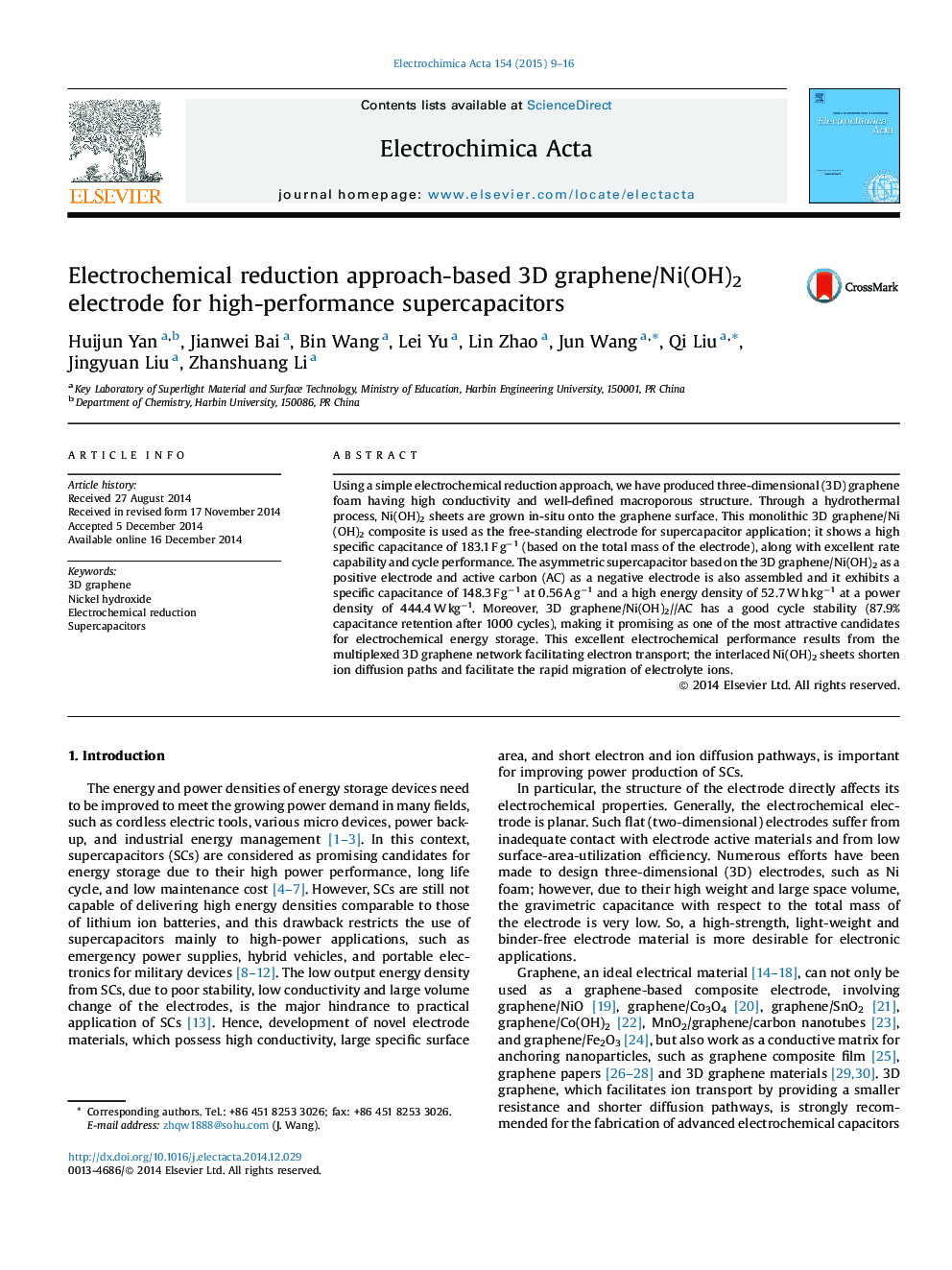| Article ID | Journal | Published Year | Pages | File Type |
|---|---|---|---|---|
| 184658 | Electrochimica Acta | 2015 | 8 Pages |
•3D graphene foam is synthesized by a simple electrochemical reduction method.•The 3D graphene/Ni(OH)2 composite is used as a monolithic free-standing electrode material.•The 3D conductive graphene network improves the contact between electrode and electrolyte.•Compositing graphene with Ni(OH)2 sheets take full advantage of the synergistic effects.•Results show that the as-synthesized products have good electrochemical property.
Using a simple electrochemical reduction approach, we have produced three-dimensional (3D) graphene foam having high conductivity and well-defined macroporous structure. Through a hydrothermal process, Ni(OH)2 sheets are grown in-situ onto the graphene surface. This monolithic 3D graphene/Ni(OH)2 composite is used as the free-standing electrode for supercapacitor application; it shows a high specific capacitance of 183.1 F g−1 (based on the total mass of the electrode), along with excellent rate capability and cycle performance. The asymmetric supercapacitor based on the 3D graphene/Ni(OH)2 as a positive electrode and active carbon (AC) as a negative electrode is also assembled and it exhibits a specific capacitance of 148.3 F g−1 at 0.56 A g−1 and a high energy density of 52.7 W h kg−1 at a power density of 444.4 W kg−1. Moreover, 3D graphene/Ni(OH)2//AC has a good cycle stability (87.9% capacitance retention after 1000 cycles), making it promising as one of the most attractive candidates for electrochemical energy storage. This excellent electrochemical performance results from the multiplexed 3D graphene network facilitating electron transport; the interlaced Ni(OH)2 sheets shorten ion diffusion paths and facilitate the rapid migration of electrolyte ions.
Graphical abstractFigure optionsDownload full-size imageDownload as PowerPoint slide
